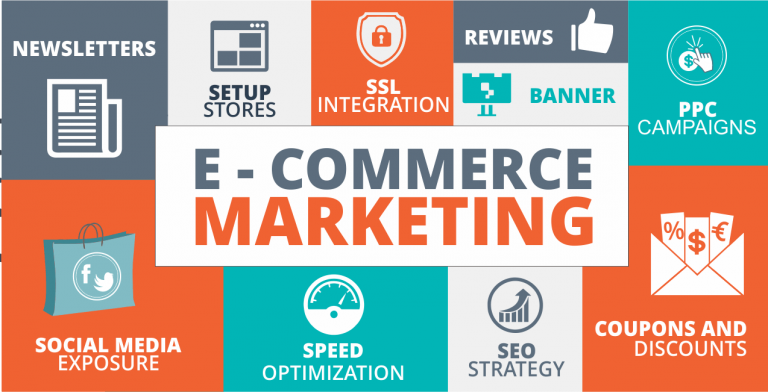
Table of Contents
Introduction
E-commerce Marketing Strategies are the cornerstone of success within the rapidly evolving landscape of digital commerce. As the competition escalates and consumer behaviors undergo changes, understanding and implementing these strategies becomes essential not only for attracting customers but also for retaining them. In this blog post, we will delve into the world of e-commerce marketing, exploring tactics that are specific to online businesses, customer retention strategies that build lasting relationships, techniques to reduce the dreaded cart abandonment, insights for sustainable growth, and actionable steps for implementation.
E-commerce Marketing Tactics
1. Personalized Product Recommendations: In the virtual aisles of e-commerce, personalization is key. Utilizing data-driven insights, e-commerce platforms can recommend products based on a customer’s browsing and purchase history. This tailored approach enhances user experience and often leads to increased sales as customers discover products aligned with their interests. Implementing AI-driven recommendation engines takes this approach a step further, providing real-time suggestions that continuously adapt to customer preferences.
2. Social Media Advertising and Influencer Collaboration: Social media platforms have become powerful marketing tools. E-commerce businesses can leverage targeted advertisements to reach potential customers. Furthermore, collaborating with influencers who have a substantial following in the relevant niche can amplify brand visibility and trust, driving traffic and conversions. This symbiotic partnership taps into influencers’ authenticity and engagement, fostering a more genuine connection with the audience.
3. Content Marketing and SEO: Quality content not only educates but also engages potential customers. E-commerce brands can create informative blog posts, videos, and guides related to their products. Integrating effective SEO strategies ensures that this content ranks well in search engine results, directing organic traffic to their websites. Crafting compelling narratives around products cultivates a deeper connection with consumers, fostering brand loyalty.
Customer Retention Strategies
1. Loyalty Programs: Rewarding returning customers fosters a sense of loyalty. E-commerce platforms can implement loyalty programs that offer discounts, exclusive offers, or early access to new products. These incentives motivate customers to choose the brand repeatedly. Additionally, cultivating a sense of community through loyalty programs enhances customer engagement and advocacy.
2. Remarketing Campaigns: After the initial purchase, staying connected with customers is crucial. E-commerce businesses can employ email marketing and retargeting ads to keep their products on customers’ minds. Offering personalized discounts on items they’ve shown interest in can rekindle their engagement. These strategic reminders, aligned with effective E-commerce marketing strategies, build brand recall and encourage repeat purchases.
3. Exceptional Customer Service: Great customer service leaves a lasting impression. Responding promptly to inquiries, resolving issues efficiently, and ensuring a seamless buying experience can turn satisfied customers into brand advocates. Going above and beyond in customer support builds trust and loyalty.
Reducing Cart Abandonment
1. Simplified Checkout Process: A complex checkout process can deter customers from completing their purchases. By streamlining the process and offering guest checkout options, cart abandonment rates can significantly reduce.
2. Abandoned Cart Recovery Emails: Automated emails reminding customers about items left in their carts can work wonders. Including compelling visuals of the products, along with a clear call to action, encourages customers to return and complete their purchase swiftly. E-commerce marketing strategies, such as personalized follow-ups and exclusive offers, can further reinforce this re-engagement process.
3. Transparent Pricing and Shipping Costs: Hidden costs during the checkout process can lead to frustration and cart abandonment. Displaying transparent pricing and shipping costs upfront helps customers make informed decisions without any surprises. This transparency builds trust and enhances the overall shopping experience.
Conclusion
E-commerce marketing strategies thrive on innovative approaches for customer attraction, retention, and satisfaction. Personalization, loyalty programs, and addressing cart abandonment build a robust online presence. Mastering these tactics fosters e-commerce success, skillfully combining persuasion with behavior analysis. Adaptation to evolving consumer preferences ensures sustainable growth.


